Cherry Tomato plants are popular for gardeners due to their compact size and bountiful fruit production. However, like plants, they can encounter problems hindering their growth and yield. It is important to be aware of these common issues to take preventive measures and ensure the health of your Cherry Tomato plants. Cherry Tomato plants can face a variety of problems throughout their growth cycle.
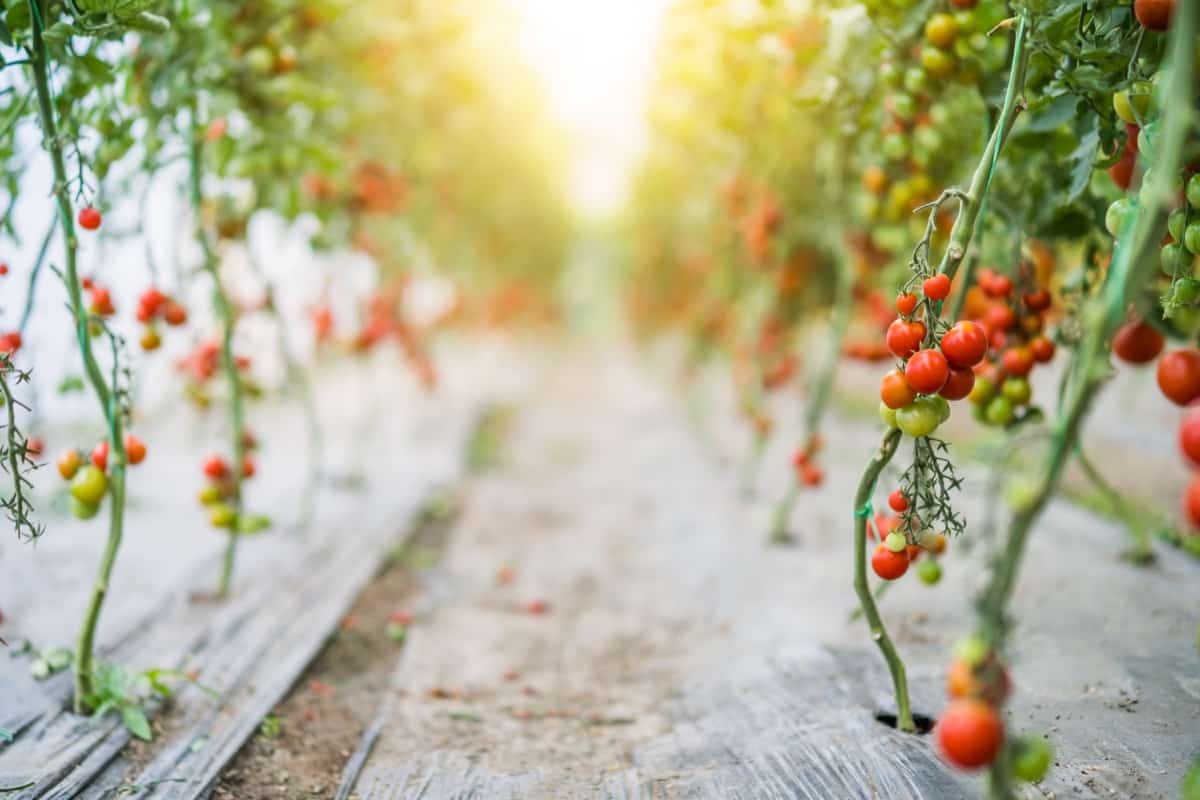
These issues can hinder the plant’s health and productivity from pests and diseases to environmental factors. However, you can ensure your Cherry Tomato plants thrive with proper prevention measures, timely treatment, and effective solutions. Be proactive in finding solutions for problems that may arise during the growing season.
14 Common Problems with Cherry Tomato Plants
Why Are My Cherry Tomato Plants Not Producing Fruit?
Cherry Tomatoes rely on bees and other insects for pollination. If you notice an absence of buzzing visitors in your garden, it could explain why your plants aren’t setting fruit. Consider planting flowers nearby to attract pollinators, or even try hand-pollinating the flowers yourself using a small brush. Another common culprit behind low fruit production is inadequate sunlight. Tomato plants thrive in full sun, so ensure they get at least 6-8 hours of direct sunlight each day.
If nearby trees or structures shade them, it might be time to consider relocating them to a sunnier spot. Fertilizer also plays a significant role—too little or too much can hinder fruit formation. Ensure you’re providing balanced nutrition with an appropriate fertilizer for tomatoes and following the recommended application rates. Insects like aphids and whiteflies can damage blossoms and prevent proper fruit development. Additionally, diseases such as fungal infections can also inhibit fruit set.
How to Prevent Blossom End Rot in Cherry Tomatoes?
Blossom end rot is a common problem many gardeners face when growing Cherry Tomatoes.
Maintaining consistent watering practices is crucial to prevent blossom end rot. Tomato plants need regular and even moisture levels to ensure proper calcium uptake. Avoid letting the soil dry completely between waterings, but be careful not to overwater.
In case you missed it: How to Plant Cherries from Seeds: A Guide to Sowing to Harvesting
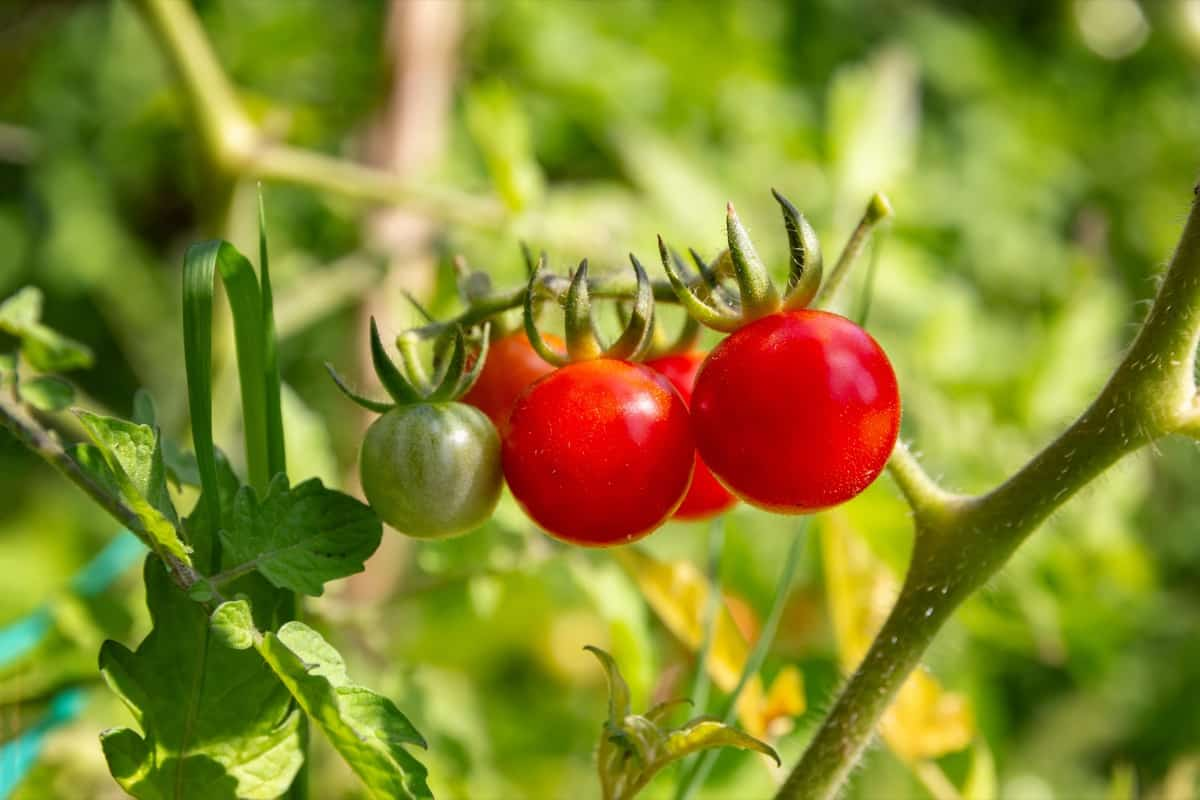
Another important factor in preventing blossom end rot is ensuring adequate calcium availability in the soil. Add crushed eggshells or powdered calcium carbonate into the planting hole before transplanting your Cherry Tomato seedlings. A balanced fertilizer with higher phosphorus levels can also help improve calcium absorption.
What Causes Yellow Leaves on Cherry Tomato Plants?
Yellow leaves on Cherry Tomato plants can be a sign of several different issues. One common cause is nutrient deficiency, specifically a lack of nitrogen. Nitrogen is essential for leaf growth and overall plant health. You can apply a balanced fertilizer with higher nitrogen levels to the soil around your plants to address this issue.
When the roots are constantly saturated, they cannot absorb nutrients properly, leading to yellowing foliage. Ensure your plants are in well-draining soil. Pests can also cause yellowing leaves by sucking out sap and depriving the plant of vital nutrients. Inspect your plants regularly and use organic pest control methods if necessary.
How to Treat Fungal Diseases in Cherry Tomato Plants?
Fungal diseases can wreak havoc on Cherry Tomato plants, causing wilting leaves, stunted growth, and even death if left untreated. Prevention is key when it comes to fungal diseases, but sometimes despite our best efforts, these pesky pathogens find their way into our beloved plants. First and foremost, properly identifying the fungal disease is crucial to choose an effective treatment method. Some common fungal diseases that affect Cherry Tomatoes include early blight, late blight, septoria leaf spot, and powdery mildew.
Several treatment options are available once you’ve identified the specific fungus affecting your plants. One popular method is using organic fungicides made from ingredients like copper or sulfur. These products create a protective barrier on the plant’s surface to prevent further infection. Another natural option is making your DIY fungicidal spray using baking soda mixed with water and a few drops of dish soap.
This mixture helps control powdery mildew by altering the pH level on the leaves surface. Good cultural practices, such as proper spacing between plants for adequate air circulation, can also help prevent fungal diseases from spreading. Regularly inspecting your Cherry Tomato plants for any signs of infection and promptly removing affected leaves can significantly reduce the spread of fungi.
In case you missed it: 16 Common Cherry Tree Problems: How to Fix Them, Solutions, and Treatment
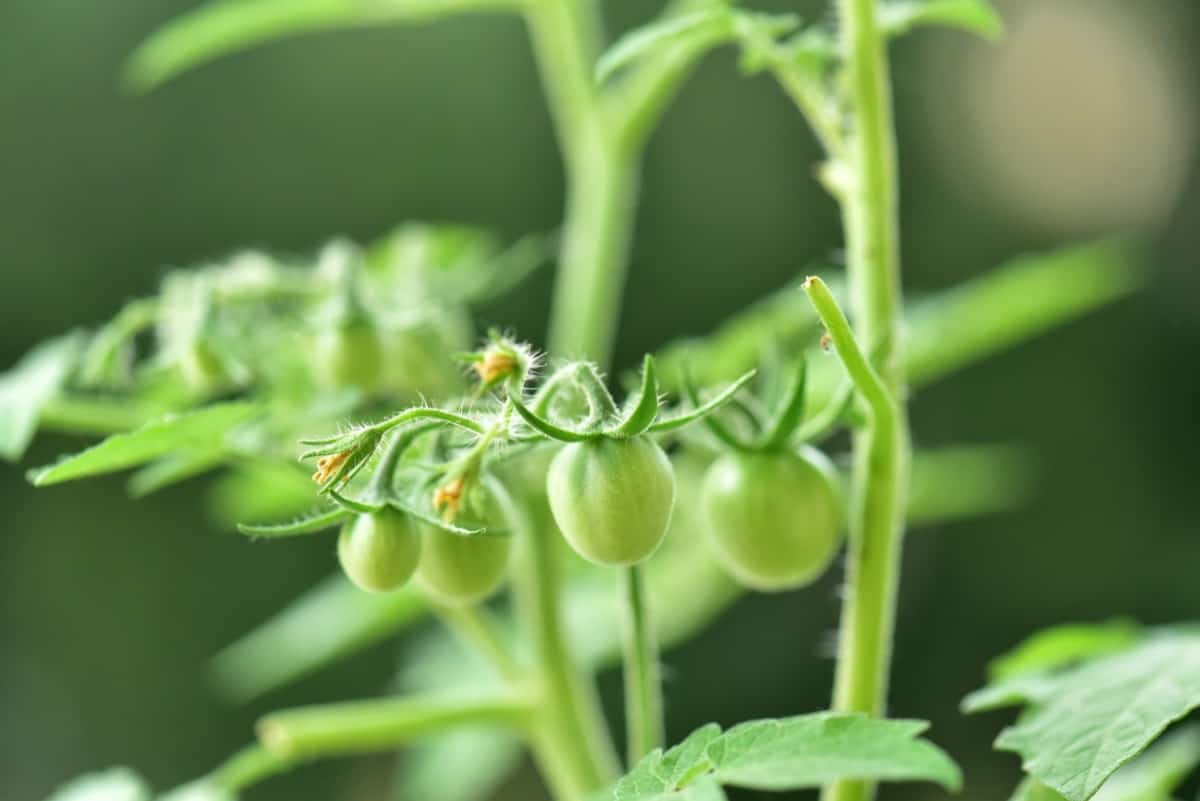
How to Control Aphids on Cherry Tomato Plants?
Aphids can be a pesky problem for Cherry Tomato plants, but several effective methods exist to control their infestation. One natural solution is introducing beneficial insects like ladybugs or lacewings into your garden. These predators feed on aphids and can help keep their population in check. Another option is to make organic insecticidal soap by mixing water and liquid dish soap.
Apply this mixture directly onto the affected parts of the plant, covering both sides of the leaves where aphids tend to hide. Repeat this process every few days until the infestation is under control. If you prefer a chemical approach, commercial insecticides are also available, specifically formulated for aphid control. Regularly inspecting your Cherry Tomato plants for signs of aphid presence is crucial in catching an early infestation.
Look out for curled or distorted leaves, sticky honeydew residue, or clusters of small green bugs congregating on new growth. Maintaining good garden hygiene by removing weeds or debris that may harbor aphids can also help prevent their spread. Additionally, pruning overcrowded branches can improve air circulation and reduce favorable conditions for aphid populations.
Why Are My Cherry Tomato Plants Wilting?
Cherry Tomato plants are a delightful addition to any garden, but it can be disheartening to see them wilting. One common cause of wilting in Cherry Tomato plants is under or overwatering. These delicate plants require consistent moisture, so watering them regularly and providing adequate drainage. Additionally, check the soil moisture level before watering to avoid overdoing it.
Another possible reason for wilting could be pests or diseases attacking your Cherry Tomato plants. Insects like aphids or diseases such as fusarium wilt can cause damage to the plant’s vascular system, leading to wilting. Inspecting your plants regularly and taking appropriate measures if you spot any signs of infestation or disease is essential.
How to Support Sprawling Cherry Tomato Plants?
Stakes provide vertical support for the plants while allowing air circulation, which helps prevent diseases. Drive a stake into the ground next to each plant and use soft ties or twine to secure the stems as they grow taller. Cages are another great option. These cylindrical wire structures surround the entire plant, providing ample support from all sides. As your Cherry Tomatoes grow, gently guide the branches through the openings in the cage so they stay upright and avoid breaking under their weight.
Another technique is pruning. By removing some of the lower branches and suckers (small shoots that emerge at leaf joints), you can redirect energy toward fruit production instead of excessive foliage growth. Consider using trellises or arbors for vertical support. These structures offer a more decorative solution while giving your Cherry Tomatoes something sturdy to climb on.
In case you missed it: 16 Common Cherry Tree Problems: How to Fix Them, Solutions, and Treatment

How to Prevent Splitting in Cherry Tomatoes?
Cherry Tomatoes are beloved for their sweet flavor and bite-sized goodness. However, one common problem that gardeners often encounter is the splitting or cracking of the fruit. This phenomenon occurs when a sudden influx of water enters the tomato, causing it to expand faster than its skin can accommodate. To prevent splitting in Cherry Tomatoes, it’s important to maintain moisture levels in the soil. A regular watering schedule will help provide a steady moisture supply without overwhelming the plant.
Mulching around the base of your Cherry Tomato plants can also prevent splitting. Organic mulches such as straw or compost can be used effectively. Another strategy to prevent splitting is proper pruning and training techniques. Removing excessive foliage and side shoots promotes better airflow around the fruit clusters, reducing humidity levels and minimizing stress on the plant.
How to Identify and Control Tomato Hornworms on Cherry Tomato Plants?
Tomato hornworms can wreak havoc on your Cherry Tomato plants if left unchecked. These large, green caterpillars with white stripes are notorious for their voracious appetite and ability to blend in with the foliage of your plants. One telltale sign of a tomato hornworm infestation is the presence of chewed leaves and stems on your Cherry Tomato plants. You may also notice dark droppings, known as frass, scattered around the affected areas.
Inspecting your plants carefully is important to spot the actual hornworms. Look for large green caterpillars that can grow up to 4 inches long. When controlling tomato hornworms, you can try a few effective methods. One option is handpicking them off your plants and disposing of them properly. Alternatively, you can introduce natural predators like parasitic wasps or use organic insecticides designed for caterpillar control. Regularly monitoring your Cherry Tomato plants for signs of these destructive pests is key to preventing widespread damage.
How to Protect Cherry Tomato Plants from Extreme Heat?
Extreme heat is one of the biggest challenges for Cherry Tomato plants during the summer months. High temperatures can cause stress to the plants and inhibit their growth, leading to stunted development and decreased fruit production. However, there are several measures you can take to protect your Cherry Tomato plants from extreme heat.
You can use shade cloth or a simple umbrella to create a respite from intense heat. Mulching around your Cherry Tomato plants helps retain moisture in the soil and keeps it cooler. Watering consistently is vital in preventing dehydration caused by high temperatures. Aim to water deeply at least once a week, ensuring that the water reaches down into the root zone of your plants.
How to Stop Cherry Tomato Plants from Drooping?
First, make sure your Cherry Tomato plants are getting enough water. Inadequate watering is a common cause of drooping. Water them deeply and regularly, especially in hot weather or if grown in containers. Next, check the soil moisture level. Adjust your watering schedule accordingly if it’s consistently wet or overly dry. Proper drainage is crucial for preventing root rot and maintaining healthy plants. Another factor to consider is sunlight exposure. Cherry Tomatoes need at least six to eight hours of direct sunlight daily.
In case you missed it: Best Fertilizer for Cherry Trees: Homemade, Organic, Compost, Liquid, Natural, NPK, Requirements, When and How to Apply
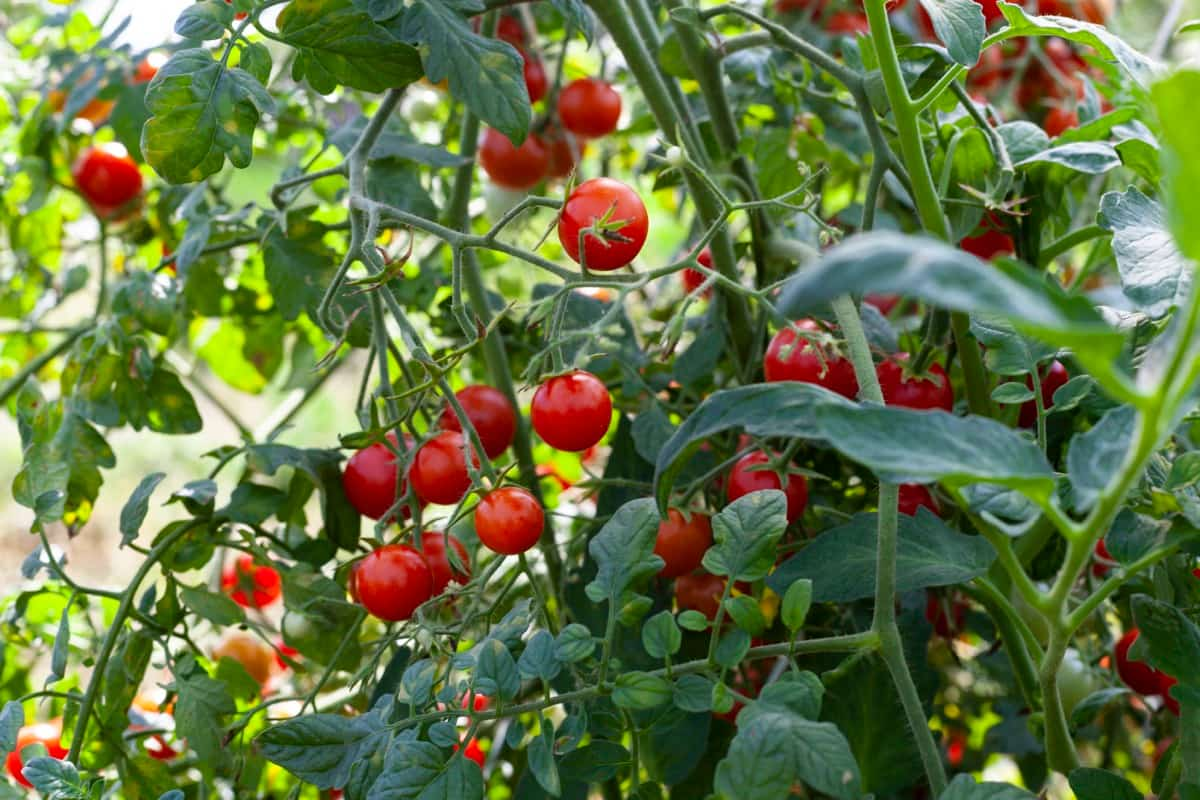
They may become weak and droop if they’re not receiving enough light. Ensure they’re planted in ample sunshine, or consider using grow lights indoors. Supporting your tomato plants with stakes or cages can also help prevent drooping by providing structural support as the plant grows taller and heavier with fruit. Be mindful of nutrient deficiencies which can lead to weakened stems and droopy foliage. Regularly feed your Cherry Tomato plants with a balanced fertilizer according to package instructions.
How to Increase Pollination in Cherry Tomato Plants?
Pollination plays a crucial role in the fruiting of Cherry Tomato plants. You may notice a lack of fruit or even misshapen and undersized tomatoes without proper pollination. If your Cherry Tomato plants are not producing as much fruit as you would like, there are several steps you can take to increase pollination.
Consider attracting more pollinators to your garden. Bees and other beneficial insects are natural pollinators and can improve the success rate of pollination. You can do this by planting flowers that attract bees nearby, such as lavender or marigolds. Another way to boost pollination is by hand-pollinating your Cherry Tomato plants. This involves using a small brush to transfer pollen from one flower to another within the same plant or between different plants.
Why Are My Cherry Tomato Plants Stunted?
If your Cherry Tomato plants are not growing as they should, there could be several reasons behind their stunted growth. One common cause is insufficient sunlight. Tomato plants need at least six to eight hours of direct sunlight daily to thrive. If they are not getting enough sun, consider moving them to a different location or trimming nearby trees or shrubs that may be blocking the light.
Another possible reason for stunted growth is improper watering. Overwatering can lead to root rot and poor nutrient uptake, while underwatering can cause stress and hinder proper development. Nutrient deficiencies can also stunt the growth of Cherry Tomato plants. They require a balanced diet of essential nutrients such as nitrogen, phosphorus, and potassium.
If you notice yellowing leaves or poor overall growth, it may indicate a deficiency in one or more nutrients. Consider using organic fertilizers or amendments specifically formulated for tomatoes to give them the necessary nutrients. Pests and diseases can also hinder the growth of Cherry Tomato plants. Common pests like aphids and spider mites feed on plant sap, weakening the plant’s health and impeding its growth potential.
Similarly, fungal diseases like blight or powdery mildew can damage foliage and prevent optimal growth. Overcrowding can lead to stunted Cherry Tomato plants. When planted too closely together, competition for resources such as sunlight, water, and nutrients increases significantly. Give your tomatoes plenty of space so that they have room to spread out their roots and grow unhindered.
In case you missed it: Cherry Growing Tips, Techniques, Ideas, and Secrets
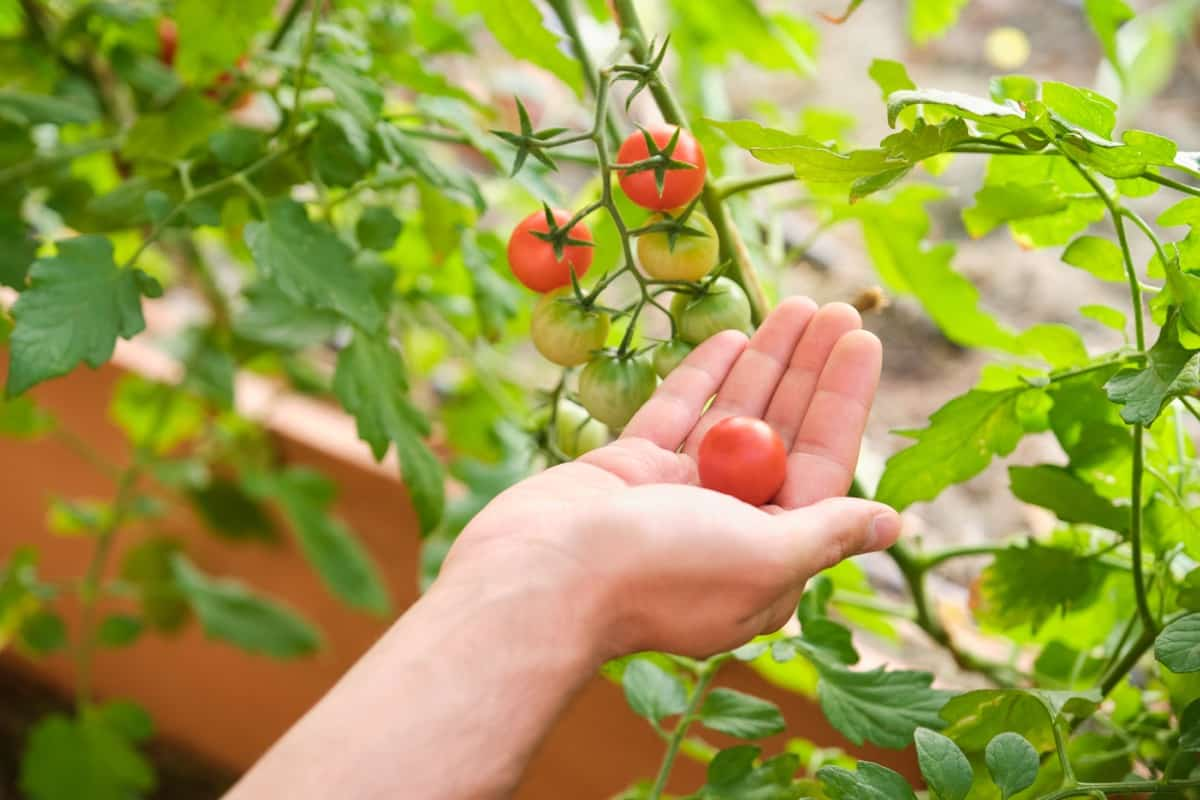
How to Deal with Nutrient Deficiencies in Cherry Tomato Plants?
| Nutrient deficiency | Symptoms | Treatment measures |
| Nitrogen | If you notice pale leaves and weak growth, your plant’s likely lack nitrogen. | To address this issue, apply a balanced fertilizer that contains nitrogen or use organic options like compost or manure. |
| Phosphorus | Potassium deficiency may also occur in Cherry Tomato plants, leading to yellowing leaves and poor fruit development. | A potassium-rich fertilizer or wood ash can help rectify this deficiency. |
| Iron, magnesium, and calcium | If you notice specific symptoms such as yellowing between veins (indicative of iron deficiency) or curled edges on new leaves (a sign of magnesium deficiency). | Regularly testing your soil’s pH levels can also help identify potential nutrient deficiencies early on. Adjusting the pH level with lime or sulfur can improve nutrient availability to your Cherry Tomato plants. |
Conclusion
Successfully growing Cherry Tomato plants involves proper care and attention. You can ensure your Cherry Tomatoes thrive by addressing common problems such as overwatering, insufficient sunlight, nutrient deficiencies, pests and diseases, and the importance of pruning. By understanding common problems that may arise with Cherry Tomato plants and implementing preventative measures or appropriate treatments when necessary, you can enjoy a bountiful harvest of delicious homegrown tomatoes all season long.
- Broccoli Seed Germination and Selection
- Asparagus Seed Germination and Variety Selection
- Seasonal Flower Gardening: Best Practices for Spring, Summer, Fall, and Winter
- How to Grow Hibiscus from Flower
- Plantation Ideas for Home Decoration: A Beginners Guide
- Flower Garden Designs and Layouts for Beginners
- Planting and Spacing Techniques in Papaya: A Beginner’s Guide
- Growing Gold: Essential Techniques for Planting Pineapples
- How to Make Kalanchoe Plant Bushy: Home Remedies and Solutions
- 11 Reasons Why Your Gardenia is Not Blooming: Home Remedies and Solutions
- Eco Elegance: The Guide to Designing a Drought-Tolerant Landscape
- Gardening on a Slope: Strategies for Hillside Landscaping
- Nourish and Flourish: Top Organic Mulches for Thriving House Plants
- Everything You Want to Know about Indian Mogra Flower: Discover Uses and Growing
- Green Thumb Success: Expert Tips for Cultivating Greenhouse Pumpkins All Year Round
- Maximize Growth & Flavor: The Ultimate Guide to Companion Planting in Herb Gardens
- How to Control Rhododendron Problems Naturally: Home Remedies and Organic Ways to Fix Them
- Natural Magic: The Remarkable Benefits of Cinnamon for Plants
- Best Steps to Revive Dying Tulip with Natural and Organic Treatment
- 10 Reasons Why Your Angel Trumpet is Not Blooming: Remedies and Treatment
- How to Fix Periwinkle Leaf and Flower-Related Problems: Natural Remedies and Solutions
- How to Fix Zinnias Leaf and Flower Problems: Discover Natural and Home Remedies
- Organic Steps to Induce Lemon Tree Flowers: A Comprehensive Guide
- Bloom Booster: Crafting the Perfect Homemade Bougainvillea Fertilizer
- Optimizing Growth: A Guide to Applying NPK Fertilizer for Potted Plants
- 10 Best Homemade Fertilizers for Rubber Plant: DIY Recipes and Application Method
- How to Boost Female Pumpkin Flowers: Effective Steps for More Flowers and High Yields
- Transform Your Indoor Garden: Top Benefits of Pink Salt for Houseplants
- 10 Best Homemade Fertilizers for Peacock Plants (Calathea): Easy DIY Guide
- Unlock Blooms: 9 Reasons Why Your Potted Chrysanthemum is Not Blooming
- 8 Reasons Why Your Potted Hibiscus is Not Blooming: Fix it with Simple Solutions
- Unlock Blooms: 9 Key Reasons Your Potted Frangipani Won’t Flower
- 10 Reasons Why Is My Ice Plant Not Blooming: Remedies and Treatment
- 10 Reasons Why My Potted Hydrangea Not Blooming: Treatment and Remedies
- 10 Reasons Why is My Wisteria Not Blooming: Remedies and Treatment
- 10 Reasons Why is My Goldfish Plant Not Blooming: Remedies and Treatment